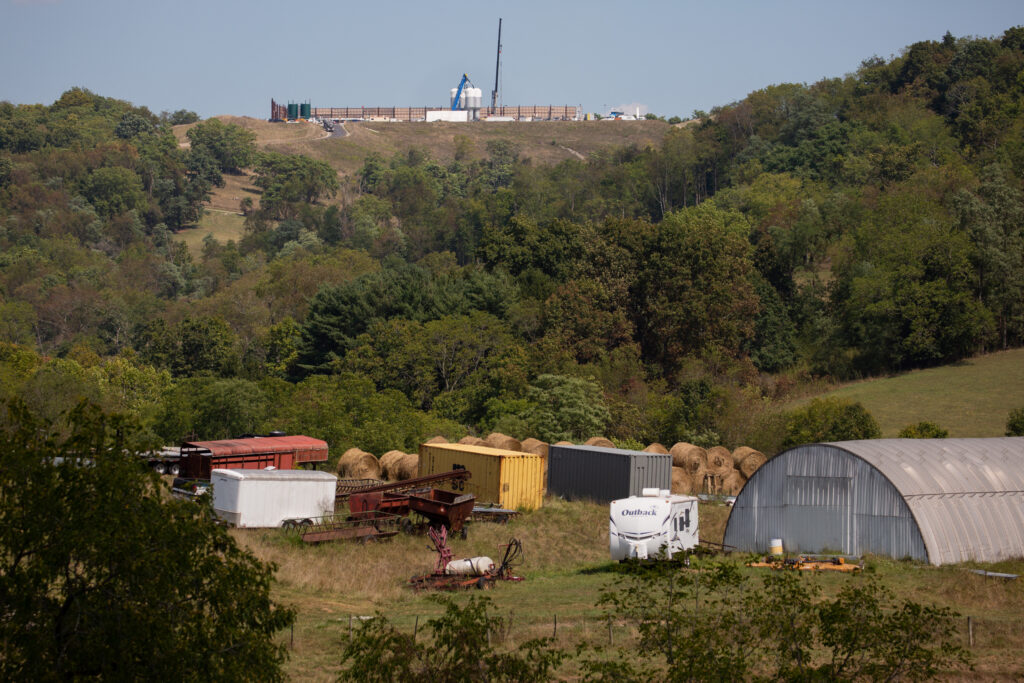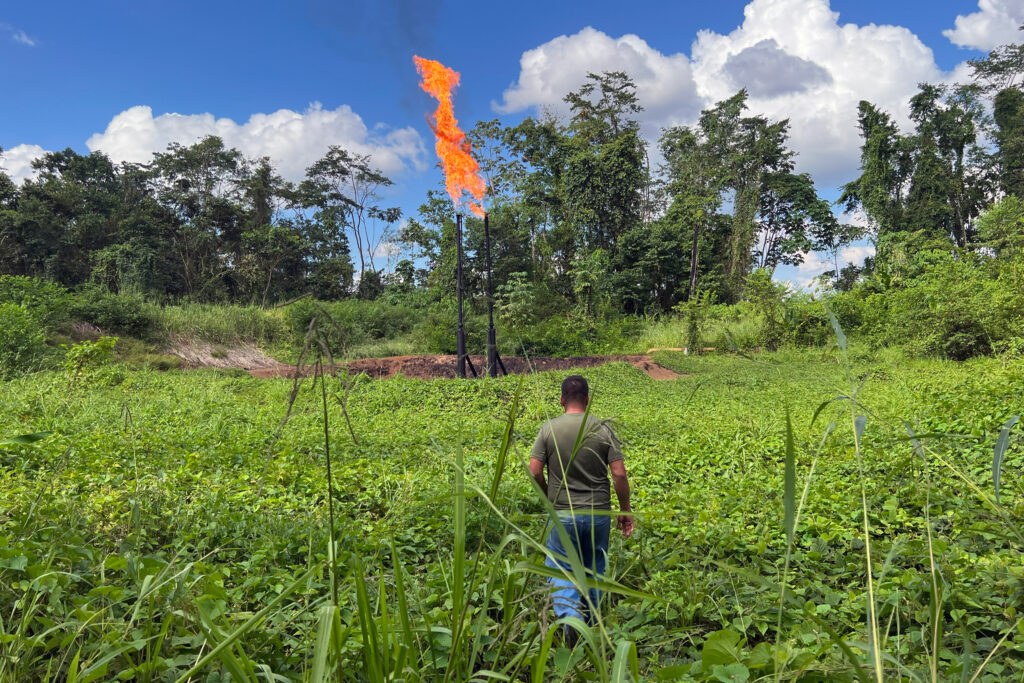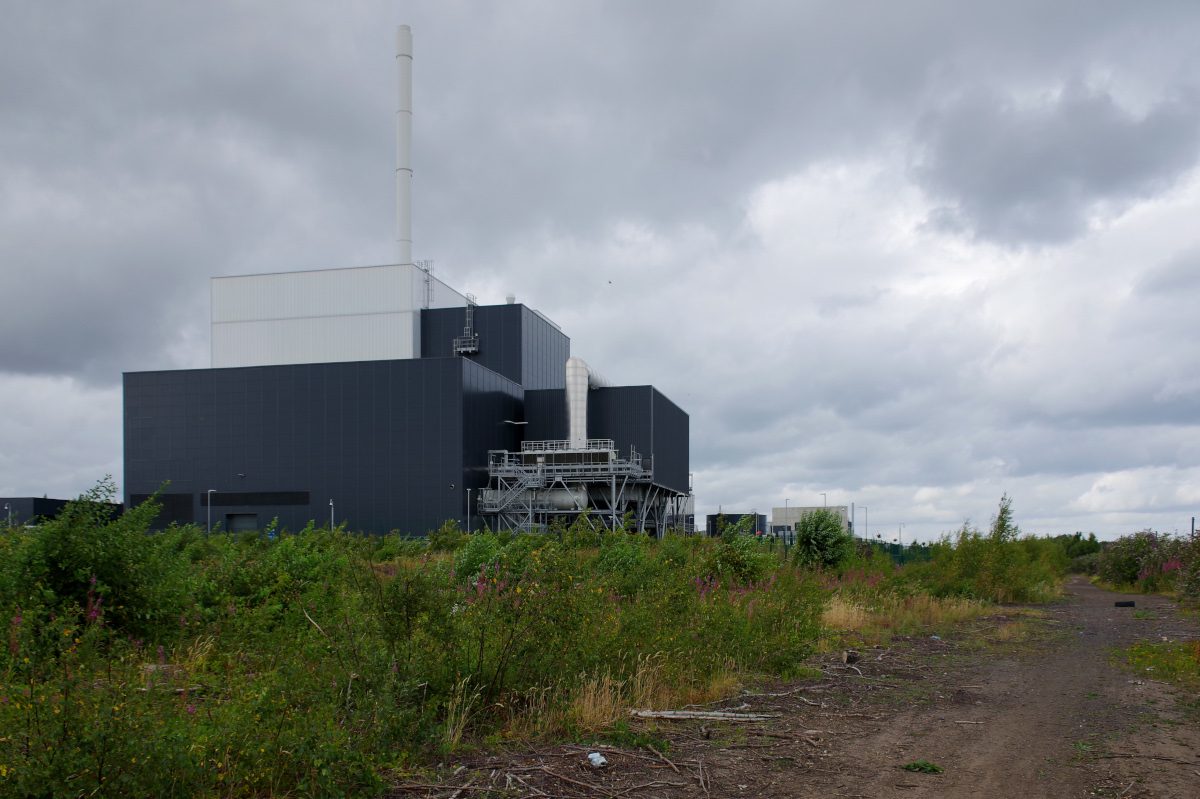From our collaborating partner Living on Earth, public radio’s environmental news magazine, an interview by Paloma Beltran with Robert Howarth, a professor of ecology and environmental biology at Cornell University.
When you fire up your gas range to cook dinner, the natural gas that’s delivered through pipes to your stove is, well, a gas.
But more and more of the natural gas the U.S. produces is destined for overseas, so it can’t just travel as gas through pipelines. Instead, it’s compressed into LNG, or “liquified natural gas,” so it can be loaded onto tankers and shipped across the ocean.
And because of its high carbon footprint, LNG has become one of the most intensely debated energy issues.
After facing pressure from climate activists, in early 2024 the Biden administration put a temporary pause on the permitting of new liquefied natural gas export facilities. That decision was swiftly challenged in court by a coalition of Republican-led states and has been in litigation for months.
Meanwhile, President-elect Donald Trump campaigned on increasing oil and gas drilling as well as approving export permits for new liquefied natural gas projects. And according to the U.S. Energy Information Administration, LNG exports from North America are on track to more than double in the next four years.
This expansion could be disastrous for the climate, according to a recent paper out of Cornell University that found the carbon footprint of U.S. LNG exports is 33 percent higher than for coal.
Author Robert Howarth is a professor of ecology and environmental biology at Cornell University. This interview has been edited for length and clarity.
PALOMA BELTRAN: Your study looked at the carbon footprint of liquefied natural gas. What did it find?
ROBERT HOWARTH: I looked at how liquefied natural gas exported from the United States compares in terms of natural gas used in the United States, and also with other fossil fuels that could be used in destination countries, in terms of their greenhouse gas consequences. And the conclusion is that the greenhouse gas footprint of liquefied natural gas is probably the worst of any fossil fuel. It’s certainly worse than natural gas used domestically. It’s also worse than that of coal in most countries.
BELTRAN: How is liquefied natural gas produced and transported? What does the process look like?
HOWARTH: It’s a heavily, heavily industrialized process with large amounts of carbon dioxide emissions, but also a large amount of methane emissions. LNG is natural gas. It’s shale gas, mostly from the United States. That is methane, and methane is an incredibly potent greenhouse gas. It’s more than 100 times more powerful than carbon dioxide for the time it’s in the atmosphere. So small emissions of methane as we produce the shale gas and as we liquefy LNG and as it’s burned by the tankers, those add up to significantly increase the greenhouse gas footprint over what you’d have just for carbon dioxide.
BELTRAN: Natural gas is often seen as a bridge fuel, but your study found that liquefied natural gas has a huge carbon footprint. Why is that?
HOWARTH: Let’s go back and look at the concept of whether natural gas is a bridge fuel at all.

That idea originated 25 years ago. It really came out of the marketing folks, public relations folks, in big oil and gas. And there’s an element of truth in it if you compare the carbon dioxide emissions when you burn coal compared with the carbon dioxide emissions when you burn natural gas to get the same amount of energy.
But that’s only part of the story, because, again, natural gas is mostly methane. You can’t develop and use that without having some of it emitted unburned to the atmosphere. And small amounts, a couple of percent of the fuel emitted, unburned to the atmosphere add hugely to the greenhouse gas consequences. So in fact, the best evidence is that the greenhouse gas footprint of natural gas and coal are about the same.
This whole idea that natural gas is a bridge fuel was debunked by the scientific literature 10 to 15 years ago, and the only reason we’re still talking about it is that great marketing ploy for oil and gas.
BELTRAN: We’re talking about major methane emissions from liquefied natural gas. How much is that costing the U.S. when it comes to its decarbonization goals?
HOWARTH: Before 2016, LNG was illegal to export. The LNG industry lobbied hard to change the rules and allow us to export. We are, by now, by far the largest exporter of LNG in the world, and about a quarter of all LNG movements in the world are coming from the United States.
The methane emissions associated with that are a substantial reason that methane is increasing in the atmosphere globally, and that is adding substantially to the climate crisis that we find ourselves in. It sort of flies in the face of what we say in terms of our climate goals for us to become such a large petrol and gas exporter.
BELTRAN: You mentioned that there’s been a huge expansion of liquefied natural gas exports in the United States. What are some of the areas where these projects are located in, and what impact have they had on surrounding communities?
HOWARTH: Almost all of the increase in LNG exports in the United States have come from our Gulf Coast, from ports in Louisiana and Texas. The communities there are feeling it.
These are large industrial plants. They have large local pollution sources. There are large ships coming in to be filled and taken away, and there are emissions associated with those ships as well.
If you talk to the local people who live in this area, they are not fans at all of this technology. They really want it to stop. If you look at where the gas is coming from, it’s almost all shale gas, and it’s largely coming from the Permian Basin in Texas, somewhat in New Mexico and similar basins in Louisiana and other parts of Texas. … This is an incredibly energy-intensive industrial process with large local emissions, which local people feel.
This story is funded by readers like you.
Our nonprofit newsroom provides award-winning climate coverage free of charge and advertising. We rely on donations from readers like you to keep going. Please donate now to support our work.
Donate Now
BELTRAN: What sort of health issues do local communities usually experience if they’re next to an LNG project?
HOWARTH: Studies show if you live near one of these drilling rigs, you have a significantly lower life expectancy, and you are more likely to suffer a variety of diseases. Other hydrocarbons, which are admitted to the atmosphere—unburned things like benzene, toluene—these are carcinogens. They’re mutagens. They cause birth defects, they cause cancer, and again, when you burn it, you’re producing nitrogen oxides, sulfur oxides, and these are huge health irritants. They aggravate lung disease. They aggravate asthma, they aggravate cardiac diseases. So there’s a significant impact on the local community near these LNG facilities, and again, in the drilling facilities.
BELTRAN: What would you say to someone who says that LNG is essential for the energy transition?
HOWARTH: Anyone who says that LNG is essential to an energy transition is speaking nonsense, quite frankly.
Let me be completely blunt. We need to be moving away from fossil fuels. And the way to move away from fossil fuels is to base our electricity on renewable sources: wind, solar and hydro, with appropriate storage. Battery storage and thermal storage are becoming far more effective and far cheaper every single day. They’re being massively employed. It’s already cheaper in most countries to generate new electricity with solar or wind than it is with new natural gas. So the future is not with natural gas in any case.
LNG is just an expensive, energy intensive, polluting way of moving gas across oceans. It’s not the way forward for any sensible energy plan.
The argument I have heard is that, well, we need to do it to help our friends in Europe because of the crisis of the Russian attack on Ukraine, and for sure, that was a big disruption in their use of natural gas. LNG exports from the U.S. did help on a short-term basis for them to get through that first winter or two. But Europe has been moving very rapidly away from natural gas. They have no growing demand for our natural gas. Their gas demand is decreasing.
Their energy production, electric production, is overwhelmingly moving to renewable sources, and they have deployed heat pumps at an unprecedented level, so their use of natural gas in heating has dropped precipitously over the last two years. They’ve set a model for how the whole world can move towards decarbonization that we should all pay attention to and follow. Trying to dump more LNG on them is counterproductive to what we need and what they are doing.
About This Story
Perhaps you noticed: This story, like all the news we publish, is free to read. That’s because Inside Climate News is a 501c3 nonprofit organization. We do not charge a subscription fee, lock our news behind a paywall, or clutter our website with ads. We make our news on climate and the environment freely available to you and anyone who wants it.
That’s not all. We also share our news for free with scores of other media organizations around the country. Many of them can’t afford to do environmental journalism of their own. We’ve built bureaus from coast to coast to report local stories, collaborate with local newsrooms and co-publish articles so that this vital work is shared as widely as possible.
Two of us launched ICN in 2007. Six years later we earned a Pulitzer Prize for National Reporting, and now we run the oldest and largest dedicated climate newsroom in the nation. We tell the story in all its complexity. We hold polluters accountable. We expose environmental injustice. We debunk misinformation. We scrutinize solutions and inspire action.
Donations from readers like you fund every aspect of what we do. If you don’t already, will you support our ongoing work, our reporting on the biggest crisis facing our planet, and help us reach even more readers in more places?
Please take a moment to make a tax-deductible donation. Every one of them makes a difference.
Thank you,
















